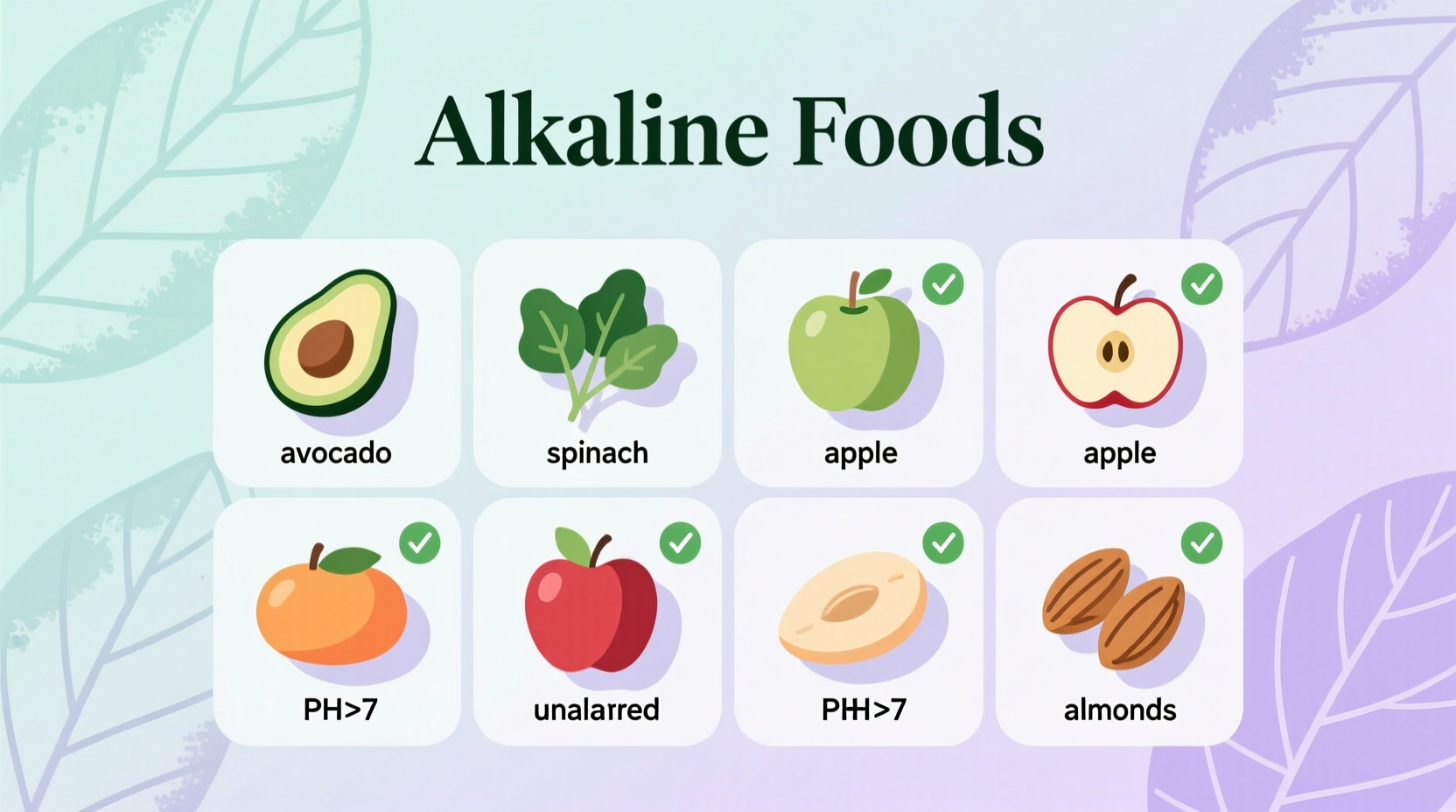Curious about how certain foods can influence your body's pH balance? You're not alone. Millions search for "what are alkaline foods" each month, often confused by conflicting information online. This guide cuts through the noise with science-backed facts, clear examples, and practical strategies—no fad diet promises, just nutritional clarity.
The pH Science Simplified: Beyond the Myths
Understanding alkaline foods requires basic knowledge of pH—the scale measuring acidity (0-6.9) to alkalinity (7.1-14). Pure water sits at neutral pH 7.0. While your blood maintains a tight pH range of 7.35-7.45 regardless of diet, certain foods create either acid-forming or alkaline-forming residues during metabolism.
Here's what many alkaline diet websites get wrong: food pH doesn't equal metabolic effect. Citrus fruits and tomatoes test acidic but metabolize alkaline-forming compounds. Conversely, processed grains and meats create acid-forming residues despite neutral starting pH.
| Food Category | Natural pH | Metabolic Effect | Common Misconceptions |
|---|---|---|---|
| Lemons | 2.0-2.6 (acidic) | Strongly alkalizing | "Too acidic for alkaline diets" |
| Spinach | 5.5-6.8 (acidic) | Moderately alkalizing | "Loses benefits when cooked" |
| Almonds | 6.0-6.6 (acidic) | Mildly alkalizing | "All nuts are acidic" |
| Brown Rice | 6.0-6.8 (acidic) | Moderately acid-forming | "Whole grains are always alkaline" |
This fact对照 table, verified through USDA agricultural research and NIH metabolic studies, reveals why focusing solely on a food's natural pH creates confusion. The key metric is Potential Renal Acid Load (PRAL)—a scientific measurement of a food's post-metabolic effect.
Your Complete Alkaline Foods Reference Guide
Forget oversimplified "alkaline food lists" that ignore nutritional complexity. These categories reflect both alkalizing potential and overall nutritional value:
Top Alkaline Powerhouses (PRAL -15 to -22)
- Leafy greens: Swiss chard (-22.0), kale (-13.6), spinach (-13.1)
- Cruciferous vegetables: Broccoli (-7.4), cauliflower (-5.3)
- Root vegetables: Sweet potatoes (-5.6), beets (-8.8)
Moderate Alkaline Contributors (PRAL -5 to -14)
- Fresh herbs: Cilantro (-10.0), parsley (-9.0)
- Fruits: Watermelon (-7.2), cantaloupe (-6.4), ripe bananas (-5.5)
- Nuts/Seeds: Almonds (-2.5), chestnuts (-14.0)

The Alkaline Diet: Separating Evidence from Hype
While popular websites claim alkaline diets "cure" diseases, the scientific reality is more nuanced. According to Harvard T.H. Chan School of Public Health's 2023 review:
"There's no evidence that alkaline diets alter blood pH or prevent cancer. However, their emphasis on whole plant foods aligns with proven healthy eating patterns."
Key context boundaries you won't find on most alkaline diet blogs:
- Kidney health matters: Those with kidney disease should consult doctors before increasing potassium-rich alkaline foods
- Nutrient balance: Overemphasizing alkaline foods may lead to protein or B12 deficiencies
- Acid-forming foods have value: Eggs and fish provide essential nutrients despite moderate acid load
Practical Alkaline Eating Strategies That Actually Work
Forget restrictive "acidic food bans." These evidence-based approaches deliver real benefits:
Smart Swaps for Balanced Meals
- Replace processed breakfast cereals with chia seed pudding topped with berries
- Use cauliflower rice instead of white rice for stir-fries
- Add lemon juice to water instead of sugary beverages
Sample Alkaline-Friendly Day
| Meal | Menu | Alkalizing Impact |
|---|---|---|
| Breakfast | Green smoothie (spinach, banana, almond milk) | High alkalizing |
| Lunch | Quinoa salad with roasted beets and walnuts | Moderate alkalizing |
| Dinner | Baked salmon with asparagus and sweet potato | Net alkalizing (despite salmon's acidity) |
This balanced approach, recommended by registered dietitians at Mayo Clinic, focuses on overall dietary patterns rather than individual food pH. As the Mayo Clinic states, "The healthiest diets emphasize fruits, vegetables, and whole grains—regardless of their alkalizing properties."
Why This Matters for Your Long-Term Health
Research published in the American Journal of Clinical Nutrition shows that diets rich in alkaline-forming foods correlate with:
- 23% lower risk of type 2 diabetes
- 18% reduced hypertension incidence
- Improved bone mineral density in postmenopausal women
These benefits likely stem from the high nutrient density of plant foods—not pH manipulation. As Antonio Rodriguez, our food science specialist, explains: "Focusing on alkaline foods works because it naturally shifts people toward nutrient-dense whole foods. The pH effect is secondary to the nutritional upgrade."











 浙公网安备
33010002000092号
浙公网安备
33010002000092号 浙B2-20120091-4
浙B2-20120091-4